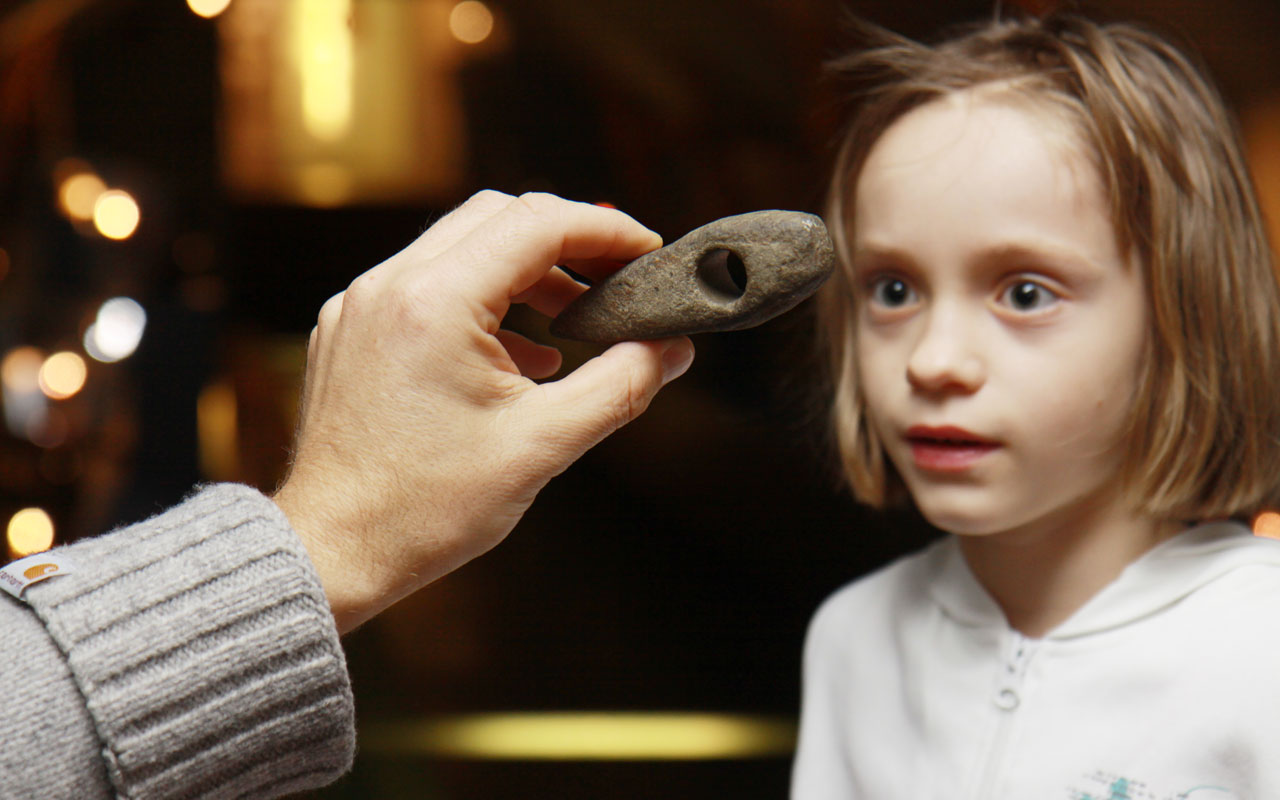The permanent collection in the Elementarium: Theme-based world of humans
From the Stone Age to the present day - the people of West Lusatia have covered a lot of ground. This development is characterised by continuous ups and downs. Like a heart that sometimes beats more strongly and at times more weakly, and sometimes even stops. Yet, piece by piece the soil reveals its secrets, if you know how to interpret the clues ...
Clues left by rocks
Flintstones, pine twigs, pitch from bark of birch trees - the materials the first inhabitants of West Lusatia used to make their tools were simple and primitive. What is left of them? The millennia may have blurred the traces, but they have not erased them completely. Small flint tools are often the first evidence that humans hunted or gathered forest fruits here 10,000 years ago or more. Although they lived simple lives, they were resourceful and adept at adapting to even the most extreme environmental changes.
Arrival in Europe
We are not always able to reproduce a clear image of human life in our region. But when human traces clearly come to light, they provide evidence of a rapid development. From the shift to farming culture to the first manufacturing of bronze, the region’s connections to different and often far-flung regions of Europe never cease to amaze. During the Lusatian culture (1400-800 BC) era, West Lusatia caught up with the rest of Europe. Artisanal clay vessels, elaborate ancestor worship and valuable bronze treasures still bear witness to the complexity of life during the period.
Under the sign of Rome
Sometimes the traces become fainter or vanish completely behind the darkness of time. Once the descendants of the Lusatians had mastered iron production and demonstrated their skill in erecting large protective structures such as the Ostro fortress, all traces of human life in western Lusatia disappeared after 500 BC. For almost 700 years we are left with no clues, until in the 2nd century A.D. when the country comes to life again. Alongside settlements and systematic iron smelting, there are two Roman coin finds that are particularly puzzling. How did Roman artefacts end up so far north? Whether they were brought to our region as trade goods, the spoils of war, gifts or mercenaries’ wages, they attest to the high degree of contact with more advanced civilisations in the south.
The power of images
By the Middle Ages, what we know about the people who lived in our region had changed dramatically. In addition to anonymous traces in burial grounds and long-vanished settlements, faces suddenly appear carved in stone, drawn with a fine pen, or later captured on film. A flood of information that transforms researchers of human life into navigators of time and space. This new flood of information is changing the way we deal with the various clues. Names, dates, and images now fit together to form one big puzzle. While many elements may be missing, it is possible to chart the accelerating pace of human-driven change.








